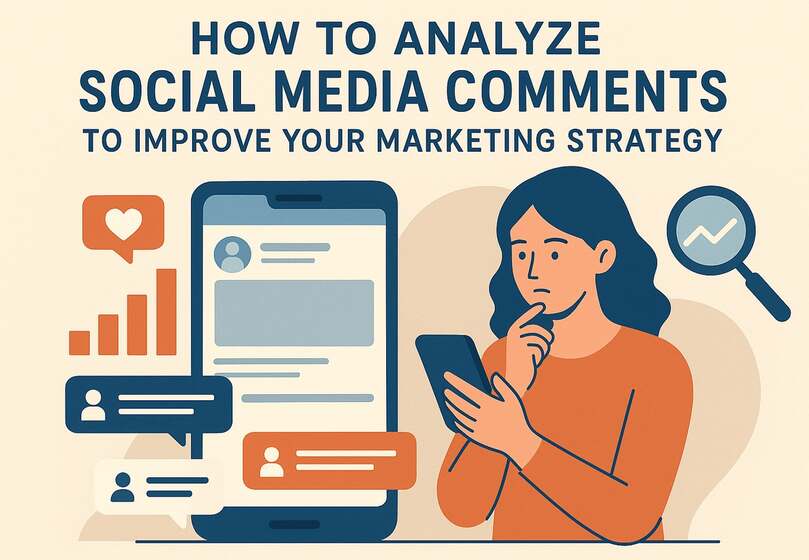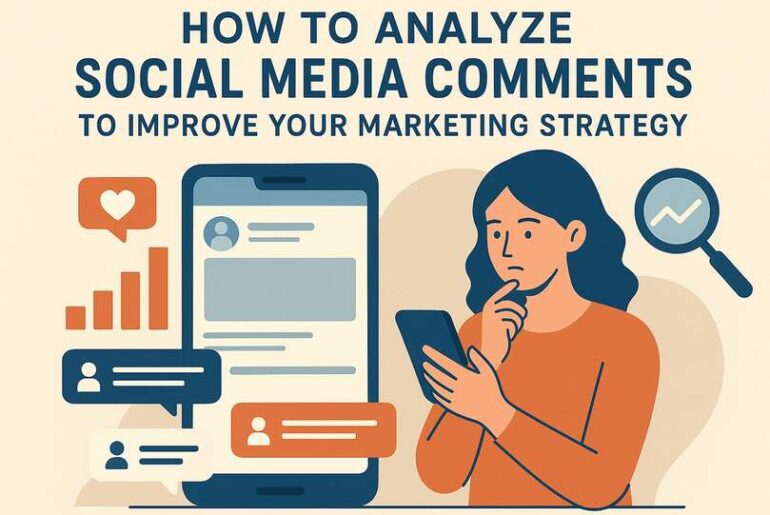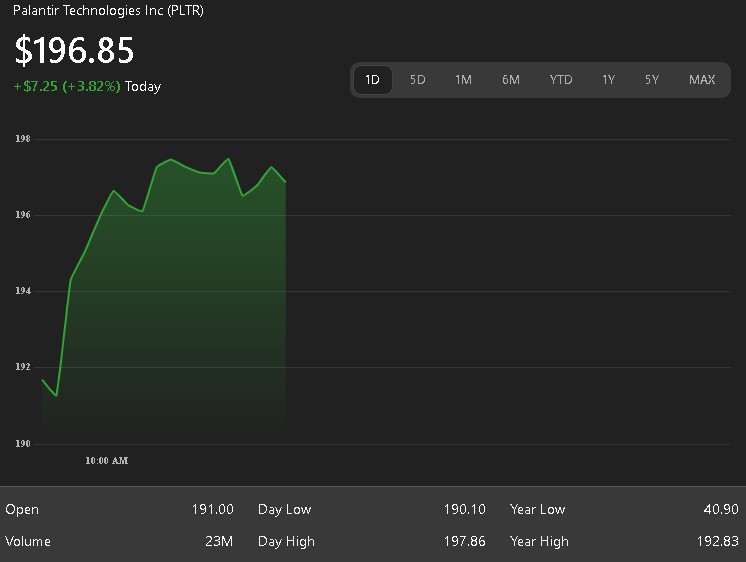In the current online environment, social media remarks are one of the most sought-after source of marketing intelligence that is not exploited to its fullest. As much as businesses spend a lot of money on surveys, focus groups, and market research, they often forget the goldmine of the true customer information that lay in their comment boxes. These unsolicited views, inquiries, and responses offer a first-hand perspective in the minds, tastes, and problems of your audience, all at no extra expense and at real time.
The comments on social media are essentially different than other customer feedbacks. Comments are spontaneous and natural unlike survey responses which are prompted and structured. They get customers in the state of engagement, and not only do they get to know what they think of your products or services, but how they speak about them, what they are most concerned with and what interests them so that they can take time to reply.
This article is going to take you through a thorough process of commenting analysis and converting the findings into a series of marketing measures which can lead to actual business outcomes.
Understanding the Value of Comment Analysis
It is worthwhile first knowing why comment analysis takes such a central place in your marketing toolkit before getting into the methodology. There are many benefits of using comments, as compared to the conventional approaches to market research.
To begin with, they are pure and raw authenticity. When a person puts a comment on your post in social media, he/she is not attempting to satisfy a survey questionnaire or fit in the set of choices. They are giving sincere responses, be it good or bad or a combination of both. This genuineness is what is particularly valuable when it comes to knowing the real sentiment of the customers.
Second, the real language that is being used by your customers can be seen through comments. Marketing teams have the tendency of getting themselves into the trap of using corporate language or language whose language is too refined or is not appealing to their targeted audience. Through the comments, you find out the words, phrases, and expressions that your customers use when they refer to your industry, products or pain points. This language skill is priceless in the creation of messages that can really resonate.
Third, commentary expression forms peer-peer dialogue. In many cases, it is not customer-to-brand communication that can be the most valuable but a communication between customers. Such interactions disclose the average interests, experience, and community dynamics that could not have been noticed in the direct feedback about your company.

Setting Up Your Comment Analysis Framework
A proper comment analysis should be systematic. Searching through comment section randomly may give one an irregular sporadic insight but a systematic analysis gives the same, regular, actionable intelligence.
Begin with setting specific goals of your analysis. Do you want to know about the feelings about a new product? Find out typical service problems with customers? Find new applications of your products? React to competitor offerings? Advanced analytical tools are needed to analyze different goals and this is where clarity is necessary.
Then decide what platforms and content you will be analyzing. Every comment on social media has not equal value. The feedback on Instagram can show various information compared to the discussions of LinkedIn articles or the responses to videos on ytcomment finder. On the same note, when commenting on education material, there is a difference in comparison to commenting on promotional posts. Develop a sampling plan that represents a representative cross-section of your social media base.
Take into account the time-period of your analysis. Do you do a one-time deep dive in historical comments, or put up a continuous monitoring system? Both approaches have merit. The long-term trends or patterns can be defined by historical analysis and the short-term issues or opportunities can be responded to as quickly as possible with the help of real-time monitoring.
Categorizing and Organizing Comments
After gathering comments to be analyzed, it is important to organize them. Unstructured comments are raw and not easy to extract insights out of these. A proper categorization system takes a chaotic world and turns it into order.
Start with the classification of sentiments. Categorize comments into positive, negative, neutral and mixed. Although this is simple, it gives the basis of analysis. But be careful about over-simplification, lots of remarks are subtle feelings that can not be easily put into positive/negative boxes. A client may be in love with your product but hate your price, or he/she likes your service and dislikes your delivery.
Make some categories of topics depending on your business and aims. They could be product attributes, product price, customer service, competitor analysis, product brand values, product packaging, product user experience and desired product applications. You can also follow the principle of of letting new themes crop up as you classify instead of trying to classify comments as predetermined categories. In many cases, the most useful information may be revealed by some unforeseen trends.
Find out the form of engagement each comment takes. There are those comments that pose questions, others present their experience, others request some recommendations, and some just present feelings. Becoming aware of these forms of engagement will assist you in strategies of engaging with individuals and the gaps within your content or message.
Note repetitive themes and patterns. Whenever you have several customers citing the same problem, extolling the same attribute, or posing similar bread and butter questions, you know you have something important. These are trends that should be given first consideration in your strategy.
Extracting Actionable Marketing Insights
Having structured data at hand, the actual job starts: to convert observations into some working marketing policies.
Product Development and Innovation: The unmet needs and wanted features are often expressed in the comments. The customers frequently report what their workaround they have done, what they are annoyed with, or what they want done better. The following insights can be explicit to your product roadmap. As an example, when several customers report using your product in a surprising manner then it may be a whole new market or a new use that should be investigated.
Content Strategy Optimization: Evaluate the type(s) of content that receive the most in-depth (as compared to superficial) responses. Listening to comments, you will also know exactly what your audience is interested in, what they are asking, and what knowledge gaps are in your content ecosystem. When your learning material triggers a lot of clarification questions you may either have to make your explanations simple or produce other introductory material.
Messaging and Positioning Refinement: Customers speak about you in words, which should reflect on your marketing copy. When your customers characterize the core value of your product in a way that is not similar to your own, then they are telling you how to position your product more favorably. On the same note, when some of your features elicit disproportionate interest or concern, focus your messaging on them.
Improvements in Customer Service: Customer feedback reveals weak points in customer service. Identify trends in complaints, but also see what issues customers publicly and privately decide to issue. The public comments are usually more of a problem that the customers feel is prevalent and not an individual problem hence they are especially significant to the systemic improvements.
Competitive Intelligence: This aspect is where customers usually make remarks on the competitors, directly or by comparison. Mentions like these will show how your audience is viewing your competitive positioning and what competitors they are also considering and what influences their decision making. This intelligence can make your competitive differentiation smarter and can guide your positioning strategy.
Community Building Opportunities: Commenters with the highest level of engagement are your most ardent community members. These people will act as the brand ambassadors responding to questions of other customers, and defending your brand against the criticism. Finding and developing these relations can make casual followers the potent marketing tools.
Advanced Analytical Techniques
When you grow more mature in your practice of comment analysis, bring in more advanced methods to make your observations more insightful.
Sentiment trend analysis is used to monitor the change in sentiment over time and it answers the question of whether your marketing campaign is making customer perception of you better or worse. Compare plot sentiment scores week or month to week or month to determine inflection points that are linked to a particular campaign, product launch, or external event.
Demographic and psychographic research looks at the possibility of audience segments having different patterns in the comments they make. This could involve comparing commentary data with profile data or contextual indication of demographic features. Knowing that millennials discuss your brand in different ways than Gen Z or the ways that small business owners interact with it in different ways than enterprise customers will allow more targeted marketing.
Conversation thread analysis also analyses whole discussion threads and not just individual comments. These discussions normally indicate how decisions are made, the objections that are often presented and the way they are countered and the community dynamics that affect the perception of a brand.
Cross-platform comparison determines the differences in the audience behavior and sentiment between various social media platforms. Your LinkedIn followers may care about professional application but your Instagram followers may want to integrate into their lifestyle. Your channel-specific strategies must be based on these platform-specific insights.
Influencer and amplifier identification Finds which commenters have outsize influence in your community. These may be those who have a lot of followers, who have known acumen, or just those who have good voices that others can hear. The use of these influencers can maximize your marketing.
Implementing Insights into Your Marketing Strategy
There is no use analyzing without taking action. The actual worth of comment analysis will be when you realistically apply knowledge to your marketing processes.
Establish an official procedure of transforming insights into initiatives. This may include monthly insight reports, which may point out some key findings and prescribe certain measures, and have the owners and timeframes. In the absence of such a structure, the insights will continue to be interesting observations, but not create drivers of strategic change.
Build feedback with other departments. Insights into comments can have marketing implications, or can be applied in product development, customer service, sales or operations. Create periodic communication channels to communicate to these teams on relevant findings and jointly work on solutions.
Test and prove knowledge prior to significant investments. Although comment analysis helps to obtain important indicators, confirm meaningful strategic changes by conducting further research or conducting small experiments. As an illustration, when there is a comment about being interested in a new feature of the product, you may establish a content about that feature or carry out a survey prior to putting a significant amount of investment into the development.
Test the effect of insightful modifications. As you adjust your strategy according to the analysis of the comments by using YouTube Comment Picker, measure the appropriate metrics to evaluate the whether the change has brought the anticipated outcomes. This accountability loop enhances your level of analysis and shows to stakeholders the importance of comment analysis.

Tools and Resources for Efficient Analysis
Although the analysis of the comments can be done manually to gain profound insight, the tools have the potential to make it significantly more efficient and scalable.
Social listening applications such as Hootsuite, Sprout social or Brandwatch provide advanced comment monitoring and analysis services. These services are able to monitor mentions over platforms, do cursory sentiment analysis, and detect trending topics or keywords.
Spreadsheet template is useful so that the comments can be organized and grouped in a systematic manner. Set up a date column, a platform column, a sentiment column, a category column, key quotes column, and an action items column. This organization simplifies the process of finding patterns and offers a database of insights, which can be searched.
Via AI-based tools, it is becoming increasingly possible to analyze a significant amount of comments, extract themes, find key phrases and determine sentiment. These tools can be used to hasten preliminary analysis, but it still needs human evaluation to provide subtle interpretation and tactical execution.
Maintain a list of comments of special insight or representative statements. They can be used as effective presentation tools, strategic planning and cross-functional alignment. Actual customer testimonies tend to be more convincing compared to theoretical statistics.
Common Pitfalls to Avoid
Despite the well-intended intentions, comment analysis may turn out of hand. Be aware of the following pitfalls.
False assurance in poor strategies is created by cherry picking of statements that reinforce current assumptions, and disregarding counter statements. Proactively pursue disconfidential information and perceive negative feedback.
Vocal minorities can be over-weighted and cause distortion of your understanding. It is important to keep in mind that commenters are not your normal customer, they are just the most active audience. Give commentaries on balances with other sources of data to keep perspective.
When one does not look at the context, he or she gets it wrong. The increase of negative remarks may be a symptom of a particular event and not a systematic issue. On the same note, favorable remarks in a promotion campaign may not reflect baseline sentiment.
Analysis paralysis – this is the situation in which you begin to analyze so much that you never take any action. Establish explicit deadlines to analyze and make decisions and realize that something will never be perfect.
Not responding with your community to their feedback will frustrate active customers. When people comment, responding to them about what you are doing when their comment shows there is a problem or inspires change. This confirms to you that you are listening and promotes further participation.
Conclusion
Comments on social media form a fertile marketing intelligence untapped. The systematic analysis of these genuine customer manifestations would provide you with an understanding of sentiment, language, needs, and opportunities, which are usually not seen in conventional research.

The most effective marketers do not see the comment analysis as a one-time activity but as a continuous practice, as part of their strategic processes. They develop systems that capture, systematize and perform actions based on insights that develop feedback loops that enhance their marketing effectiveness again and again.
Begin with simple comment analysis, when you are new to it. Identify a single platform, type of content, spend several hours sorting and filtering comments, and make one change based on some insight. As your practice of the value of this becomes a reality to you, broaden your domain and refinement.
In a world where genuine customer insights are what make a winning brand stand out among the rest of the crowd, what is being said in your comment sections is something that you should listen to. It is not a question of can you comfortably afford to analyze comments, but of can you afford not to.




